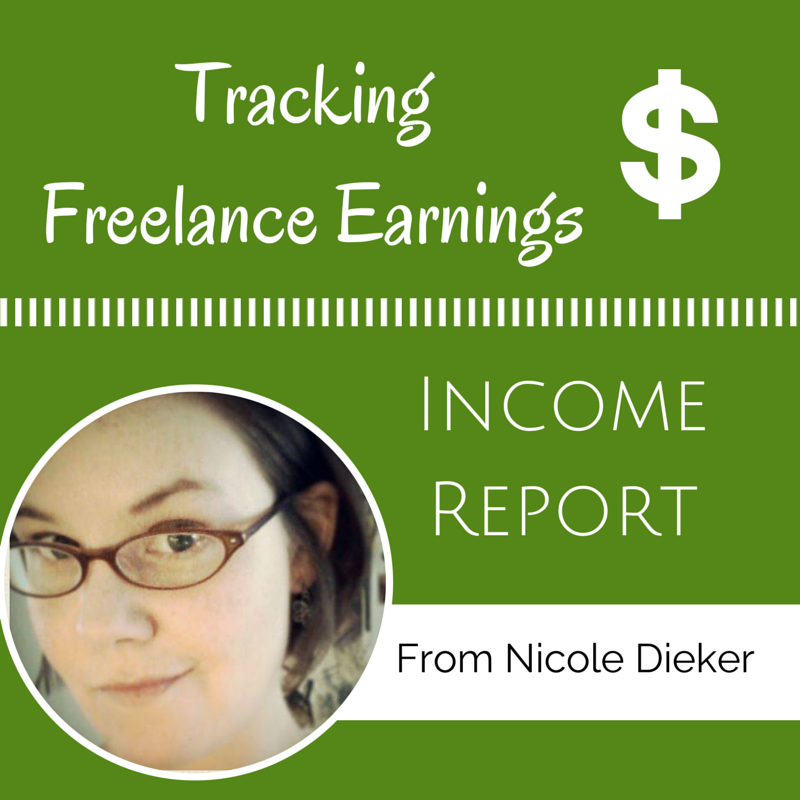If you don’t make a monthly freelancing goal, what steps do you take to keep yourself on target? This month, I didn’t hit my $5,000 income goal — but I’m working on changing things for November.
Here are October’s numbers:
Completed Pieces: 81
Work Billed: $4,985.36
Earnings Received: $5,521.62
I wrote roughly 44,500 words in October, with an average per-piece earning of $61.55. My highest earning piece was $849, and my lowest earning piece was $20.
I also came close to hitting my $5,000 monthly income goal. Seriously, I’m only $15 off! The fact that I was just shy of $5K — not to mention that I earned nearly $7K last month — means I’m not beating myself up over this.
Still, it’s worth looking at what happened.
How my projected income dropped by $1,000
For most of the month, I thought I would earn more than $5,000. But one of my clients asked that I hold off completing a piece until November, and another client accidentally assigned the same piece to two writers (thankfully, this client let me know before I started writing the piece).
My income line dropped by $1,000 overnight, without me doing anything “wrong.”
A year ago, losing two pieces might have cut $150 off my bottom line. Now, it’s a more significant income drop. The more successful I get, the bigger my risks become. Having one client cancel a piece or getting a request to hold on a draft for a month can mean losing 20 percent of my monthly income.
It’s also important to note that earning less money in October means receiving less money in November. I need to be prepared to only receive $4,500 in freelance payments this month, which means having a little less discretionary income than usual.
It’s time to start trading up
So I didn’t get a few assignments that I thought I would. This hasn’t happened before, but I bet it’ll happen again. This means I need to come up with a solution to this problem.
Can I prevent a client from canceling a piece? No.
Can I prevent a client from asking me to hold off on writing a piece? No.
What’s the actual solution here? I need to get more high-paying clients.
As you saw above, I earn $849 for some pieces and $20 for others. I’m always happy to earn that $20, especially if it’s for a piece that takes me 20 minutes to write, but I sat down with my freelance spreadsheet and started figuring out how much more money I could earn if I traded out that $20 piece for a $75 piece. Or if I traded a $75 piece for a $250 piece.
Those numbers jump significantly, if you do that kind of math. More importantly, the value of an individual client assignment becomes less critical. In other words: The more high-paying clients I land, the less risk I absorb if something happens to one of those high-paying clients.
This means I need to spend the last two months of the year trading up.
I’ve already sent out a referral request, asking one of my high-paying clients to introduce me to a new client that I’d like to land. I also need to start the end-of-year negotiation process with my current clients, to talk about rate increases for 2016.
In both cases, the onus is on me to explain exactly how I provide value and why I’m worth the referral or rate increase. You can’t just ask; you also have to show the client how they benefit from your request.
I also need to pitch more. I started pitching bigger markets this past month, and one of the pitches landed, so I’m hoping I can grow that into a regular relationship. I also have a list of additional clients to pitch before the end of the year.
I know that the $1-a-word clients are going to be few and far between, so I’m not expecting to turn every client into a $800-per-piece client. But it would be great to trade a few of those $20 pieces for $200 pieces.
As always, I’ll let you know what happens.
What do you do when you don’t meet a freelancing goal? Do you agree that more success equals more risk?
How do you know when it’s time to start trading up for higher-paying pieces?







